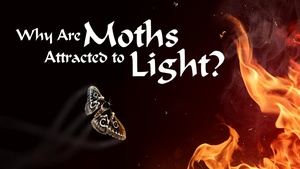There are over 4 million reptiles kept as pets in the US alone. How does light play a role in their care?

Keeping reptiles and amphibians as pets, while being criminally underrated, does come with its fair share of niche requirements. Managing the temperature of the terrarium is undoubtedly the most important. Continue reading on as we explain why this is the case and how lighting comes into play.
Why Do Reptiles Need Heat?
Any living animal on earth is essentially one big moving pile of chemical reactions. It’s these reactions that help them digest food, heal wounds, and even breathe. But these can only happen in a certain temperature range, and reptile bodies are no exception.
How Do Reptiles Keep Warm?
As I’m sure you’ve heard before, reptiles are ectothermic, or “cold-blooded”. This means that they rely entirely on outside sources in their environment to regulate their body temperature. This of course would most commonly come from the sun or a warm rock. But when we put these animals in our homes, they need to get their heat from some more creative sources.

How To Keep Your Reptile Warm
Because keeping a pet reptile properly heated is so important, there are many products made especially for that purpose. The most recognizable of these being basking lights.
Basking Lights
Basking lights usually sit over a terrarium and create a specific area in which reptiles can, well, bask. These Heat Lamps give off plenty of heat and allow some species of reptiles and amphibians to quickly warm up when they feel the need.
Bearded dragons are essentially the poster children for these things.
Giving off so much heat can often cause the rest of the tank to warm up as well. While this is a benefit, it can easily turn the enclosure into a makeshift Easy Bake Oven if left on for too long. It should be noted that basking lights can also provide a varying amount of UVA light.
UVA and UVB Lights
UVA and UVB are types of ultraviolet light, most commonly found within the sun’s rays. That being said, terrariums shouldn’t be placed in direct sunlight, as this can quickly cause the area to overheat.
Making up 95% of the sun’s radiation, UVA light is responsible for managing the appetite, hunting, and other behavior for many cold-blooded animals. UVB on the other hand is far less abundant, but crucial in the production of Vitamin D3. In short, this is what’s needed for reptiles and amphibians to digest their food properly. There are many metal halide, Halogen, and fluorescent lamps you can choose that provide both UVA and UVB light.
Heating Pads
Some reptiles lack the need for lighting all together, particularly nocturnal animals. Crested geckos and Leopard geckos are the most well-known examples of this. These reptiles will usually do just fine without any additional lights and a heat pad placed under their terrarium. On the other hand, if your nocturnal pet is in a room that gets very little sunlight, you may still need some sort of lamp to help provide a day/night cycle.

Conclusion
There’s a plethora of unique and fascinating reptiles that many people call pets. And while they may not be as expressive as your typical dog or cat, it’s important that we tend to their specific needs all the same. At the end of the day, there’s one thing you should take away from this blog:
Reptiles are like celebrities; they’re very good at looking pretty and standing under fancy lights.






